The first draft of Colorado’s Water Plan was delivered to Gov. John Hickenlooper last week, moving the state one step closer to having a comprehensive plan for meeting future water demand while protecting the state’s many water values. As we continue to explore the way people care about water in Colorado here on the blog, we shine the spotlight this week on Front Range efforts to value water by using it wisely. We invited Patrice Lehermeier of Colorado Springs Utilities to share their water conservation successes.
By Patrice Lehermeier
If you work with water, you get it. Increasing demand and supply challenges in Colorado are placing even more importance and value on water. As stewards of this resource, the greater test—and opportunity—comes as we work to educate and influence individuals and communities on the wise use of this limited and invaluable resource.
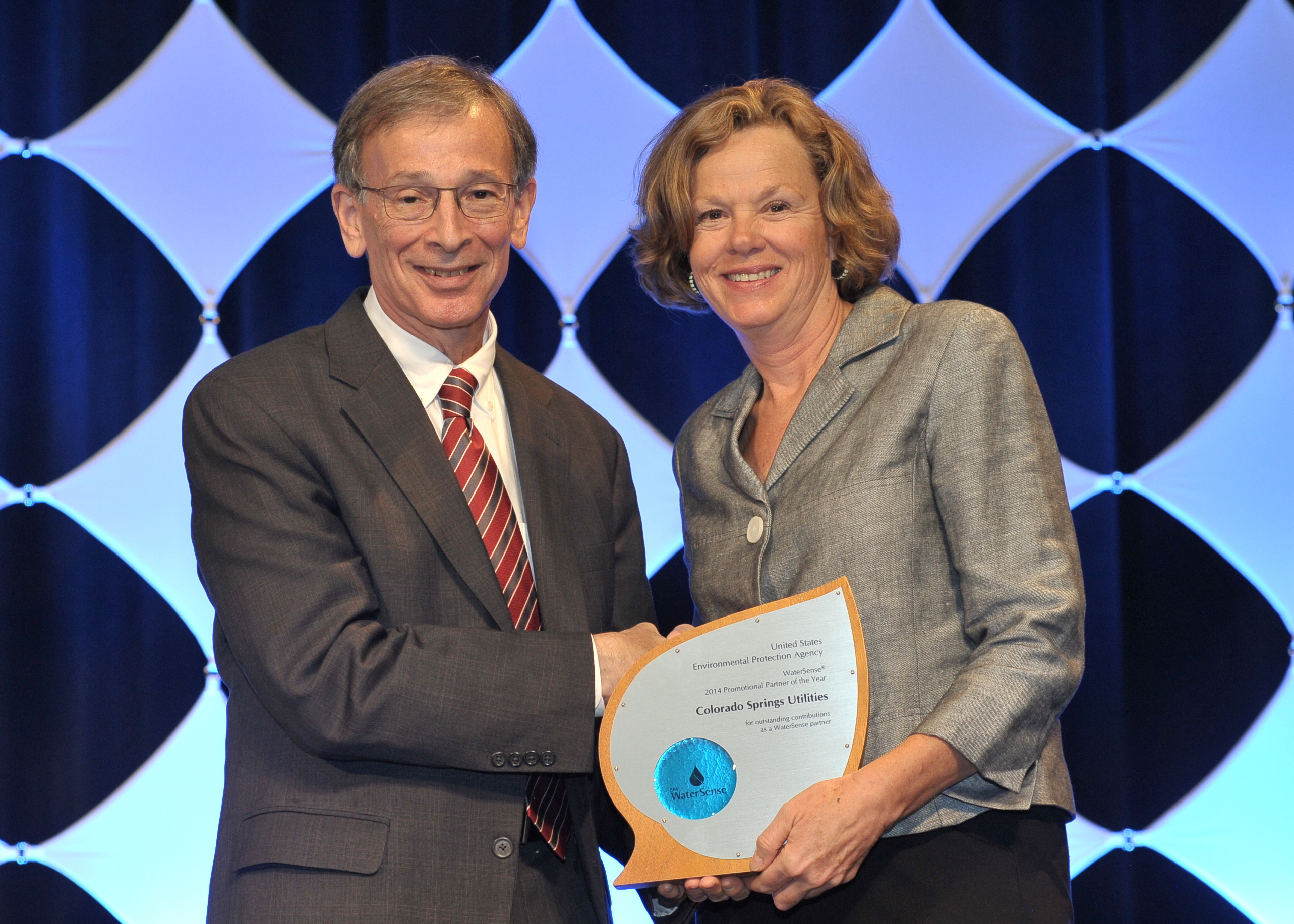
Ann Seymour, Colorado Springs Utilities’ water conservation manager, receives the WaterSence Partner of the Year award in October, 2014. The award recognized the utilties’ 88 million gallons of water savings in 2013, achieved through programs like rebates and equipment exchanges. That same year, Colorado Springs Utilities also set a water-saving goal to rebuild supply during the drought and, surpassing that goal of 5.8 billion gallons, saved 7 billion gallons through watering restrictions, conservation, rate surcharges and other measures, that’s the equivalent of 21,480 acre-feet.
In October, Colorado Springs Utilities was recognized with a 2014 WaterSense Partner of the Year award, a U.S. Environmental Protection Agency (EPA) initiative that honors partners’ commitment to promoting WaterSense and wise water use. The 2014 award marks Colorado Springs Utilities’ third consecutive recognition by WaterSense. (we previously received the 2013 Excellence Award for Strategic Contribution and 2012 Promotional Partner of the Year award.)
Along with eight other exemplary WaterSense partners across the nation, the EPA gave Colorado Springs Utilities the 2014 award based on our efforts over the course of 2013 to help low-income and nonprofit housing providers improve efficiency with WaterSense retrofits, support apartment owners and managers in property upgrades, help builders incorporate WaterSense certification, and educate customers through events, classes and a K-12 education program. That year, we surpassed our annual water savings goal of 84 million gallons, reaching 88 million gallons saved, or the equivalent of 270 acre-feet.
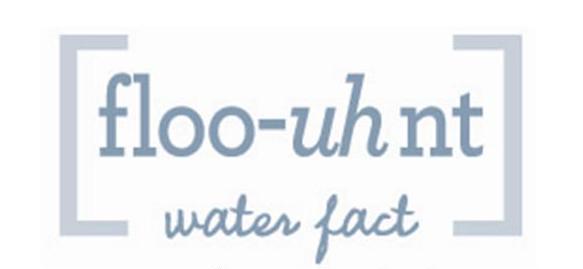
WaterSense, a partnership program sponsored by EPA, seeks to protect the future of our nation’s water supply by offering people a simple way to use less water with water-efficient products, new homes, and services. Since the program’s inception in 2006, WaterSense has helped consumers save 757 billion gallons of water and $14.2 billion in water and energy bills
So how do you motivate a community of water users to take pause and think before turning on a faucet or spigot? Before the programs, the incentives, and the eventual savings comes a rigorous amount of work and planning that strikes a balance between people and science, so to speak.
“Conservation isn’t a passive game. It requires on-the-ground, face-to-face community interactions with customers where they live, do business, meet and learn together,” says Frank Kinder, senior water conservation specialist for Colorado Springs Utilities.
Kinder is a walk-the-walk kind of guy. Proof?
“In 2010 through 2012, we offered a free pre-rinse spray nozzle exchange program to our commercial kitchen customers, provided they picked up the equipment at our location, but they’re very busy and couldn’t make the time to pick them up,” Kinder explains. “So we filled a backpack, took our rebate summaries, and went directly to the customers, offering them these free nozzles on site.
“It worked wonders. Customers had an immediate chance to see the product, understand its ability to save them money, and gain additional savings information. This method provided confirmed product installs and delivered guaranteed savings, while raising our measured customer service responses.”
Kinder emphasizes the importance of personal, tailored customer outreach, with a leave-no-group-or-person-behind approach. On any given week, he or any one of his coworkers (the group of nine full- and part-time employees serve a community of more than 440,000 people) are presenting at a variety of professional organizations, such as property-owner and manager groups, homebuilders associations, facility management organizations, restaurant associations and more.
“It’s crucial to learn their industry and speak in their terms,” Kinder says. “We also gain industry credibility through local participating businesses that vouch for results, influence their peers, and help replicate success in additional projects and programs.”
In 2013, Kinder and his coworkers spent some of their time and energy assisting low-income and nonprofit housing communities. Building on the utilities already-strong community presence and relationships, the water conservation team partnered with groups such as the Salvation Army, Partners in Housing and the Colorado Springs Housing Authority to retrofit properties. The effort did more than save water. It helped organizations like these save money, extend their limited funding, and serve more people.
While industry can reel in big efficiency savings, other customers have responded enthusiastically to programs designed for them.
In 2013, more than 4,800 people took advantage of free classes and presentations on xeriscape basics, irrigation efficiency and drip irrigation, and also participated in Xeriscape Garden Tours. It’s another example of the benefit of partnerships. Colorado Springs Utilities leans on local landscape experts and its own experienced staff to provide their expertise at no cost to customers, who get the benefit of classroom learning and one-on-one advice.
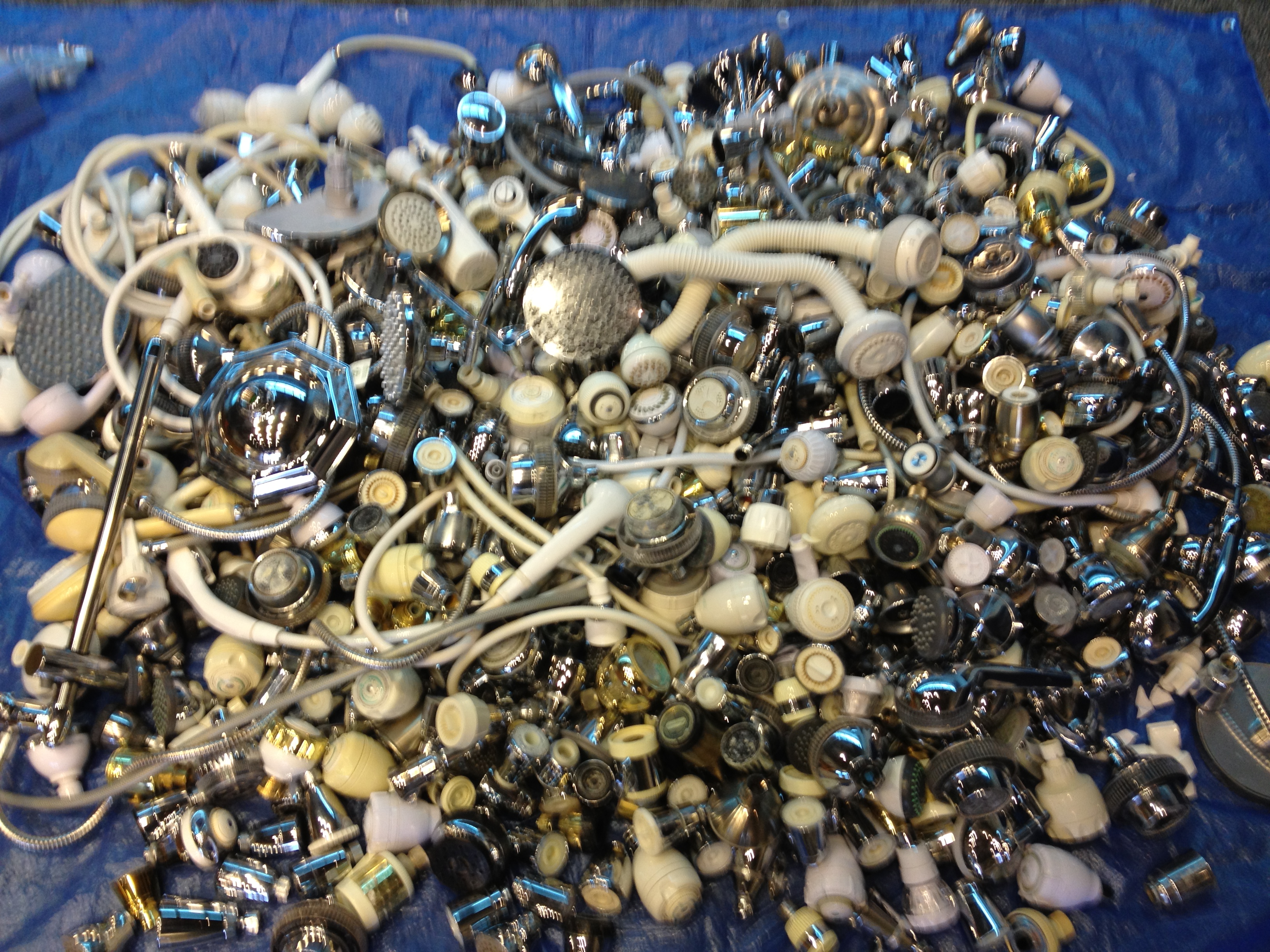
A pile of shower heads that Colorado Springs Utilities collected, swapping these out for more efficient models.
Home efficiency rebates are another way the utility incentivizes customers, but Kinder adds that all creative ideas are considered. Some that have made their way to customers include free showerhead exchanges and a utility presence at the local running club during WaterSense’s annual Fix a Leak Week.
Currently, an interactive efficiency demonstration home is nearing completion at the utility’s Conservation and Environmental Center, which is open to the public. Customers can learn about water and energy efficiency, low-water landscapes, and renewable energy through hands-on displays. Most times, staff is available to help folks who drop in with specific efficiency questions.
Connecting with customers trickles down to some of the littlest ones and future water ratepayers themselves—K-12 students. In 2014, Colorado Springs Utilities water educators interacted with 58 organizations (mostly public and charter schools, and some scout troops as well) and reached 10,652 participants, which represents about 40 percent of all second- through sixth-graders in Colorado Springs. Students get the chance to learn about the water cycle, drought, ecosystems and more through hands-on experiments and presentations. High school seniors can opt for more intensive work such as water law 101, and most programs are aligned with Colorado Department of Education academic standards.
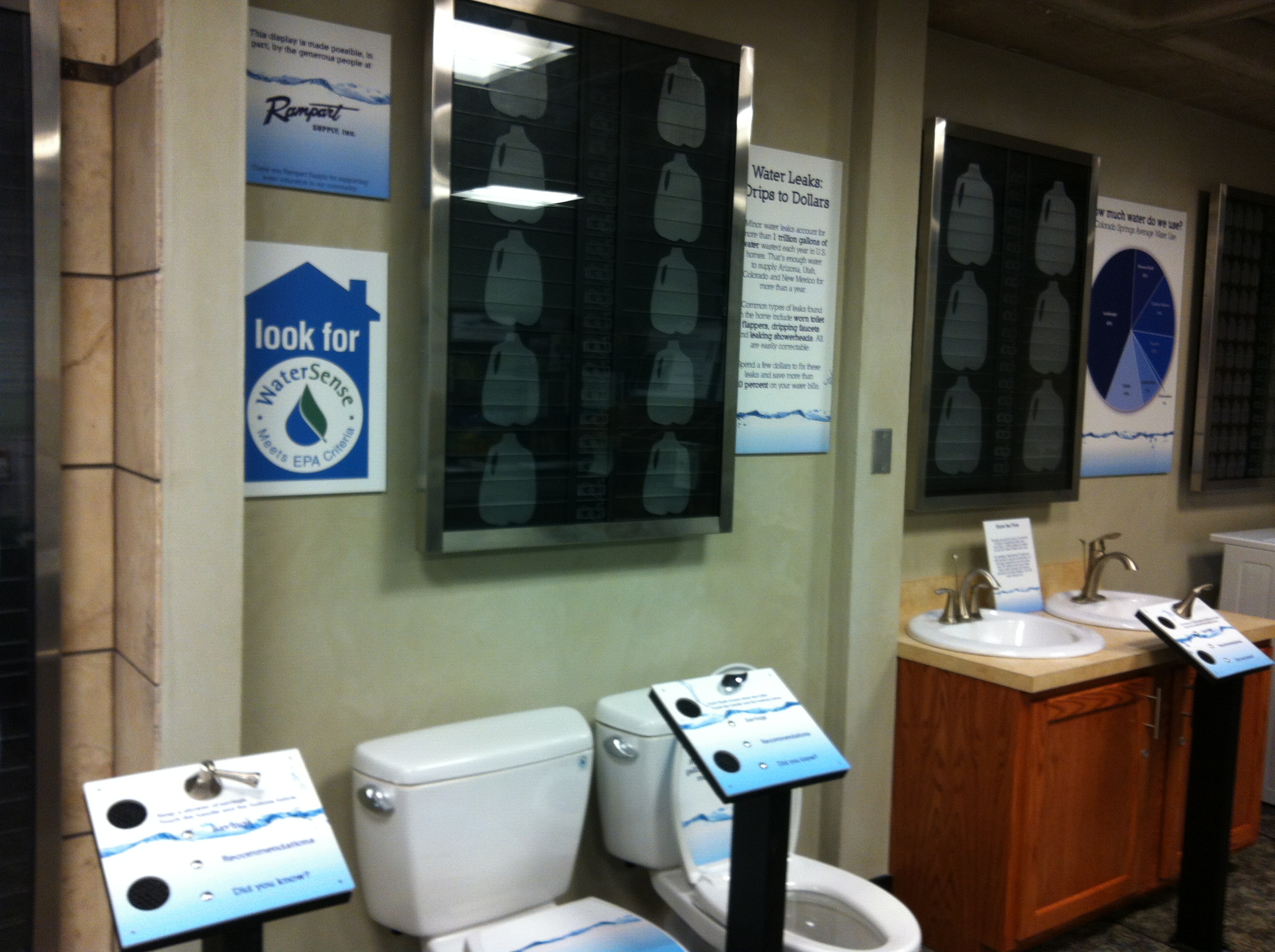
Colorado Springs Utilities educates customers in the field, in the classroom and at the utilities’ offices. This wall of water helps people visualize water savings.
With that focus on people also comes time spent on research, strategy and planning. Scott Winter, senior water conservation specialist for Colorado Springs Utilities, leads the number-crunching and analysis that points the team to the options that will help achieve the greatest results.
“Each program is evaluated annually to determine appropriate goals, budgets, targets, and other related issues. Periodic program analysis is also performed to refine savings estimates, comprehend factors influencing participation, identify new targets and understand penetration rates,” Winter says.
Implementation of and improvements made in automated meter technology has been a boon for Winter and his research. Using customer meter data, he is able to better pinpoint water use patterns and apply them to the planning process. “We’re constantly looking for opportunities to provide the largest long-term savings for the least amount of investment,” says Winter.
The investment part is crucial given the organization’s commitment to ratepayers as a nonprofit municipal utility. “We seek to understand our customers and deliver solutions that make sense in the most effective manner,” says Winter.
Kinder echoed his teammate’s thinking: “We combine genuine enthusiasm, performance and strong business cases into customer-friendly solutions. Trust, motivation and results get people interested and on board, then they become our best advocates, nudge their peers to participate, and together we all win.”
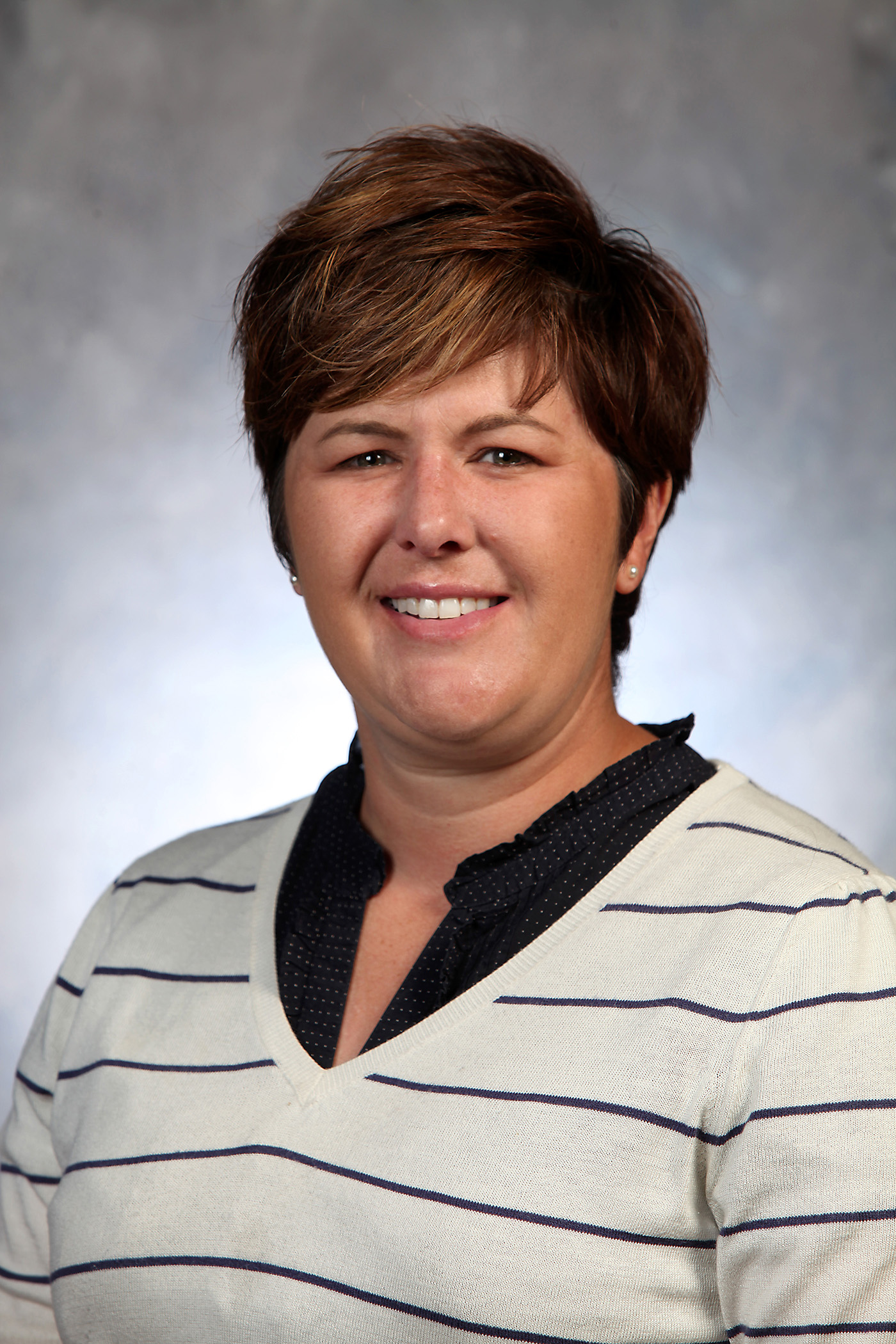 Patrice Lehermeier, APR, has served as a senior communications specialist at Colorado Springs Utilities for more than 12 years. Patrice particularly enjoys connecting with customers and helping them better understand how using water wisely positively affects our collective quality of life. Her dream is to one day help build clean water systems in developing countries. Although a transplant from California, Patrice has long called Colorado home and can be frequently found hiking or camping with her husband and dog.
Patrice Lehermeier, APR, has served as a senior communications specialist at Colorado Springs Utilities for more than 12 years. Patrice particularly enjoys connecting with customers and helping them better understand how using water wisely positively affects our collective quality of life. Her dream is to one day help build clean water systems in developing countries. Although a transplant from California, Patrice has long called Colorado home and can be frequently found hiking or camping with her husband and dog.

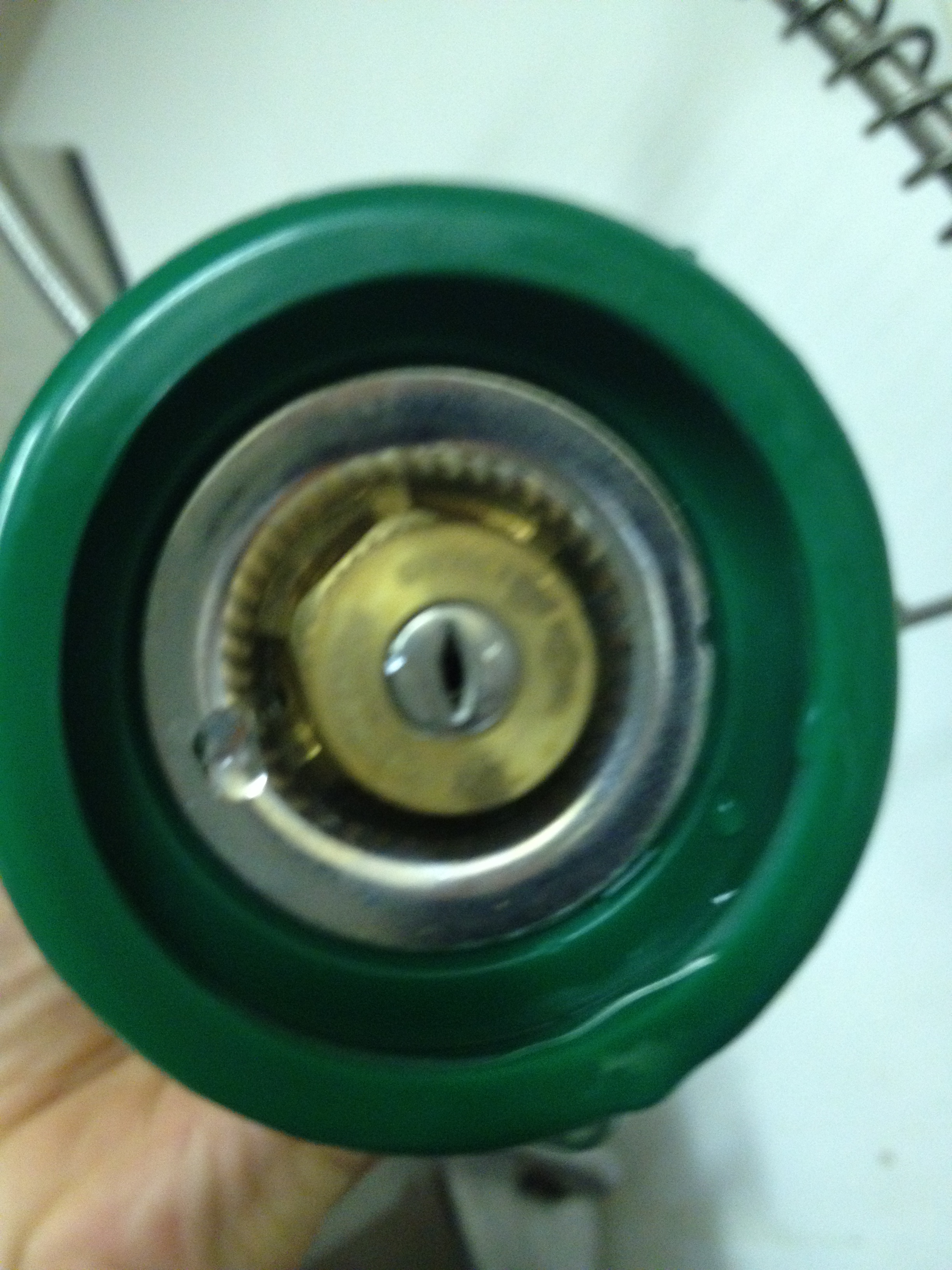
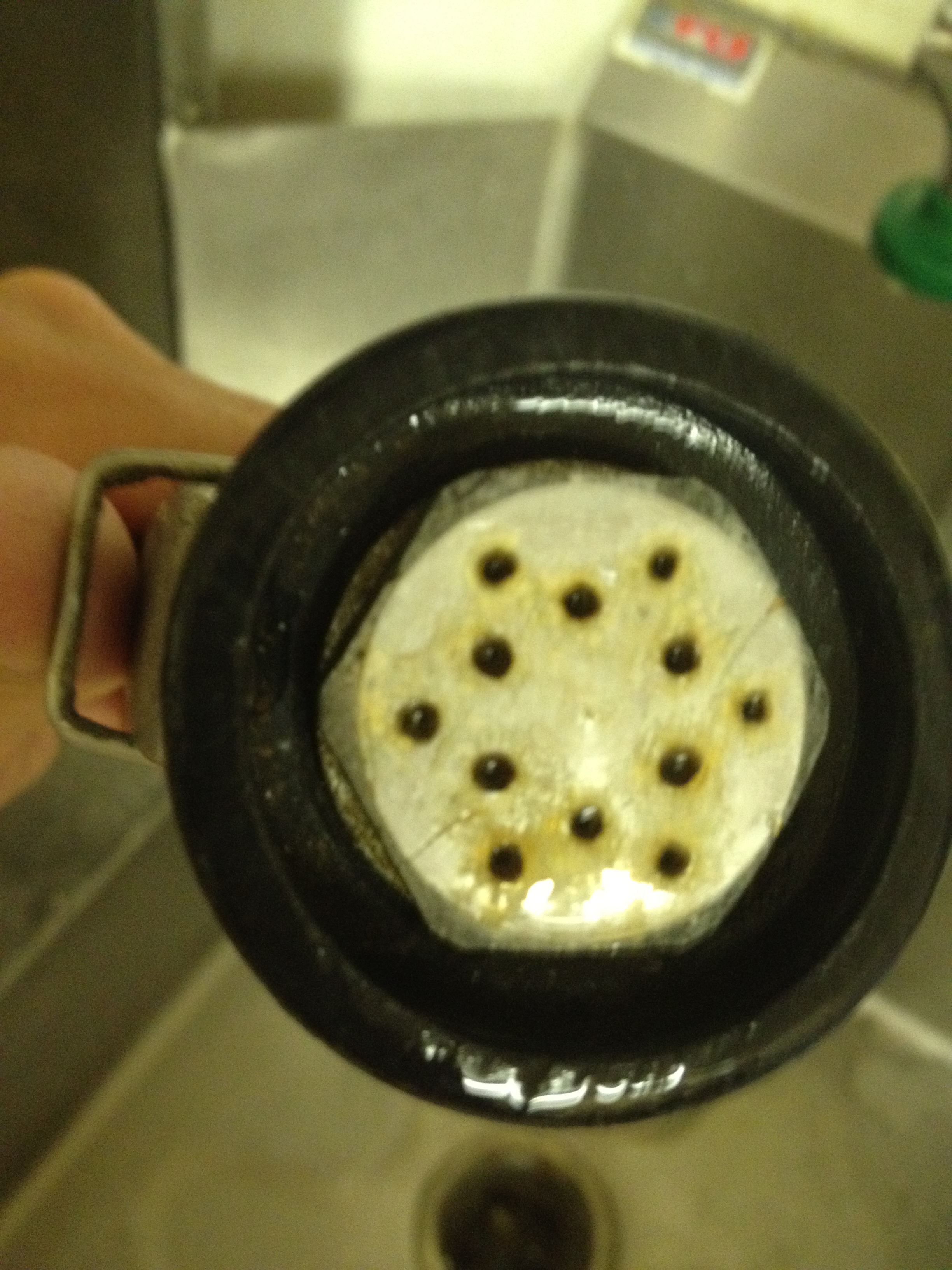
 Print
Print
Reblogged this on Coyote Gulch.